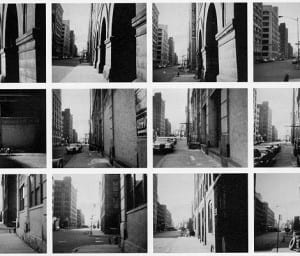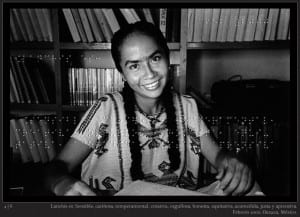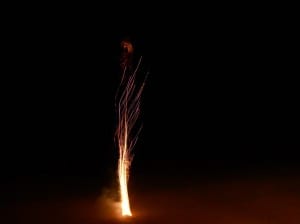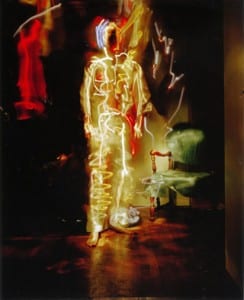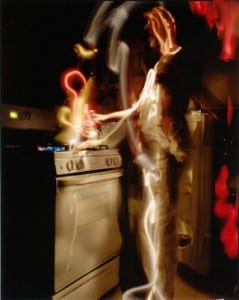- Philosophy:
Vilem Flusser in “Towards a philosophy of Photography” analyses four stages regarding the gesture of photographing : “A first aspect is the search for a place, a position from which to observe the situation. A second aspect is the manipulating of the situation, adapting it to the chosen position. The third aspect concerns critical distance that makes it possible to see the success or failure of this adaptation. Obviously there is a fourth aspect: the release of the shutter.” (Flusser,
This four stages of the photographer will be investigated in four corresponding phases
-
First phase: Observation of photographer’s process – capturing, documenting, describing from the moment that the photographer prepares until the point of capture
-
Second phase: interview and self reflection of the photographer.
-
Third phase: scores for photographer and performer.
-
Fourth Phase: organizing, editing and mapping the material;critical reflection on the process;
This practice-based research more takes inspiration and inputs from works regarding several fields.
- Performance Art
Several performance artists have decided to approach the enigma of photography by making it integral to the piece itself such Vito Acconci in his work: Blinks (1969) where the score was to hold a camera, aimed away from him and ready to shoot, while walking a continuous line down a city street. He had to try not to blink. Each time he blinked he snapped a photo.
I am interesting to create scores for the Photographer that will bring more awareness to the body and change. Simple scores inspired by performance artists practice will be use during the research.
- Photography
I take as inspiration the work of Adam Magyar, Hungarian photographer whose work “Squares” is focused on photographing people from “above” at close range walking in different places and then combining them in a composition to highlight the spatial architecture of bodies walking in the city. I am very intrigued to explore the patterns and the design of the photographer’s body moving in space.
BLIND PHOTOGRAPHERS LIKE:
Gerardo Nigenda: While he take photographs, he stays aware of sounds, memories, and other sensations. Then he will use a Braille writer to punch texts expressing those the things he felt directly into the photo.
Rosita McKenzie:
“I’ll hold my camera at arm’s length, lay it on the ground, hold it overhead,” she says. “I can be experimental because I don’t see. Instead, I sense light on my face. I hear the rustle of the wind in the trees or smell the fragrance of the flowers in the air. People ask me how I compose my shots,” she laughs, “Well, I don’t.”
“This whole process helps me to burn something into my memory, something I can use to recall as images in your head can become less clear.
“People explain to me more about the things that are around me when I have my camera.
“I can imagine what the person looks like as for example with [artist] Mary MacIver I have hugged her and touched her hair.
“It is also her personality, which says so much to me as she is very shy so I took a picture of her from behind.
“I have had photographers say that I have captured things they would not have been able to for example I took a picture of a bridge of the Edinburgh Canal and in the bottom right hand corner there was half an image of a jogger.
“I can then have the pictures produced into raised drawings.”
(source: http://www.bbc.co.uk/news/10224715)
Pete Eckert
One of Eckert’s techniques involves using a composite body view camera mounted on a tripod. Focusing with notches carved into a focus rail, he throws his studio into total darkness, opens the shutter, and roams the space “painting” his image with light, using flashlights, candles, lasers and other devices. (source: http://content.time.com/time/photogallery/0,29307,1897093_1883579,00.html)
Evgen Bavcar
http://www.evgenbavcar.com/
“The birthplace of photography is the dark, it’s the darkroom. Since I live in this darkness, you know, it’s totally normal for me to be into photography. I take photography quite seriously. I take things from a state of nothingness.” (Source:http://fresques.ina.fr/europe-des-cultures-en/fiche-media/Europe00238/evgen-bavcar-blind-photographer.html)
/////////////////////////////////////////////////////////////////////////////////////////////
SOPHIE CALLE
Conceptual Frenche artist. Her emphasis was on the artistic idea rather than the finished object.
Projects:
– Suite Venitienne (1979), Calle followed a man she met at a party in Paris to Venice, where she disguised herself and followed him around the city, photographing him.
-The Sleepers (1980):a project in which she invited 24 people to occupy her bed continuously for eight days. Some were friends, or friends of friends, and some were strangers to her. She served them food and photographed them every hour.
–The Shadow (1981): Calle was followed for a day by a private detective, who had been hired (at Calle’s request) by her mother. It was, in Calle’s words, an attempt ‘to provide photographic evidence of my own existence’. Calle proceeded to lead the unwitting detective around parts of Paris that were particularly important for her, thereby reversing the expected position of the observed subject. Aware of her follower, she also wrote about in frequent journal entries throughout the day.
–Address Book (1983): Having recently found an address book on the street (which she photocopied and returned to its owner), she decided to call some of the telephone numbers in the book and speak with the people about its owner. To the transcripts of these conversations, Calle added photographs of the man’s favorite activities, creating a portrait of a man she never met, by way of his acquaintances.
-Douleur Exquise(2003): She spend three months in Japan. She was supposed to meet her lover in New Delhi, but he didn’t turn up, instead sending her a telegram which said he was in an accident and couldn’t come. She took a photograph every day until the day they were supposed to meet in New Delhi, and wrote about how much she looked forward to meeting him. The second half of the book was all about the pain of the heartbreak. She would write about the horrible memory of the conversation where she realized he was breaking up with her on one page, and ask people to tell her their worst memory, which was placed on the right. Over the days, her story became shorter and shorter as her pain dissipated over the time.
;

